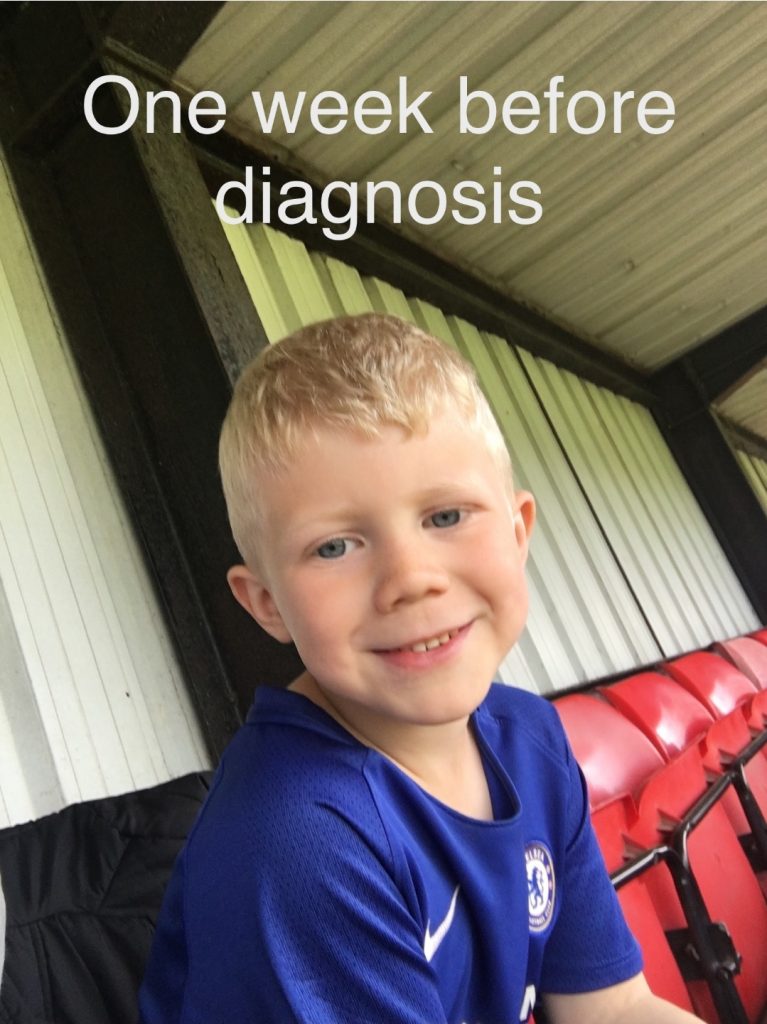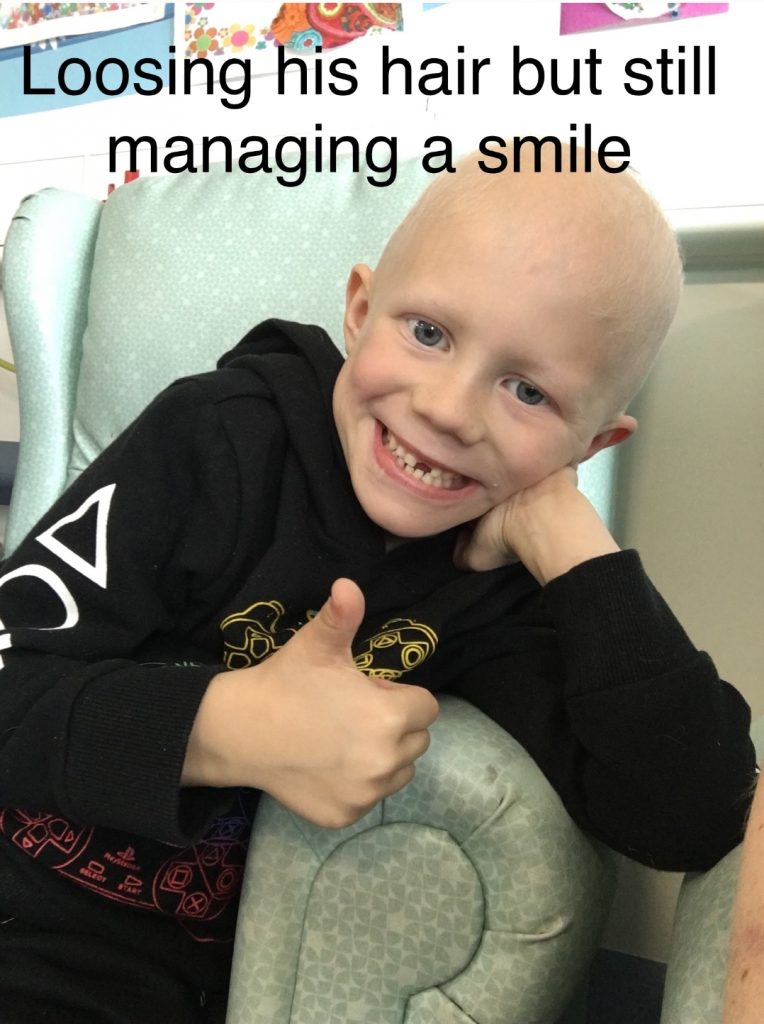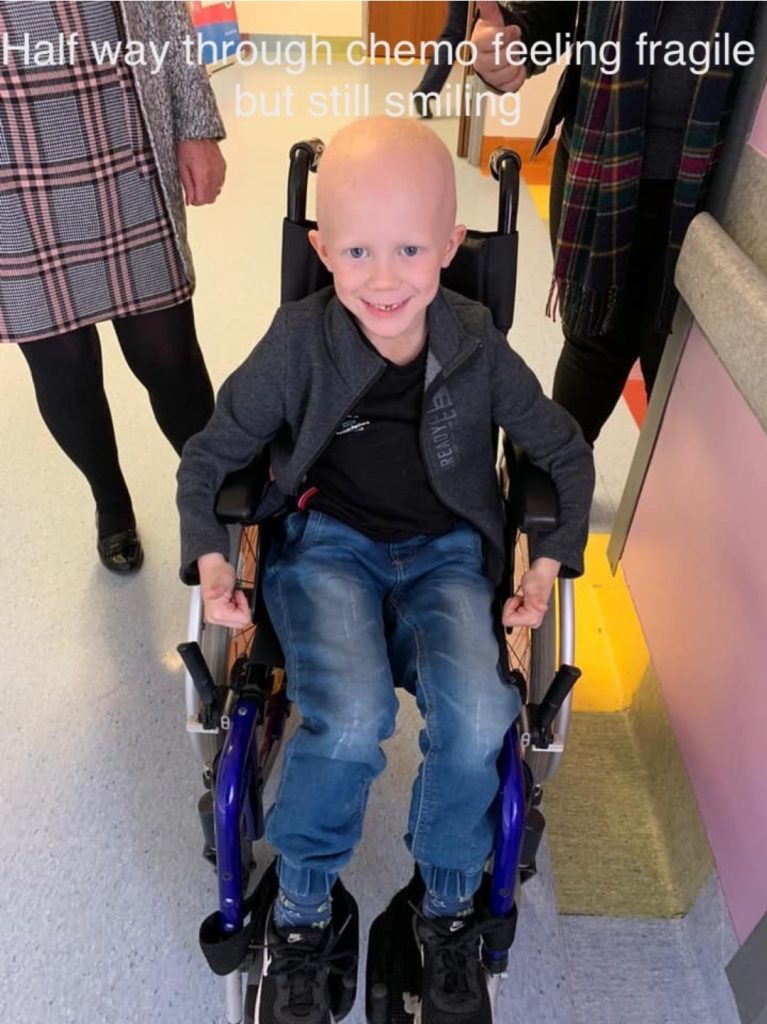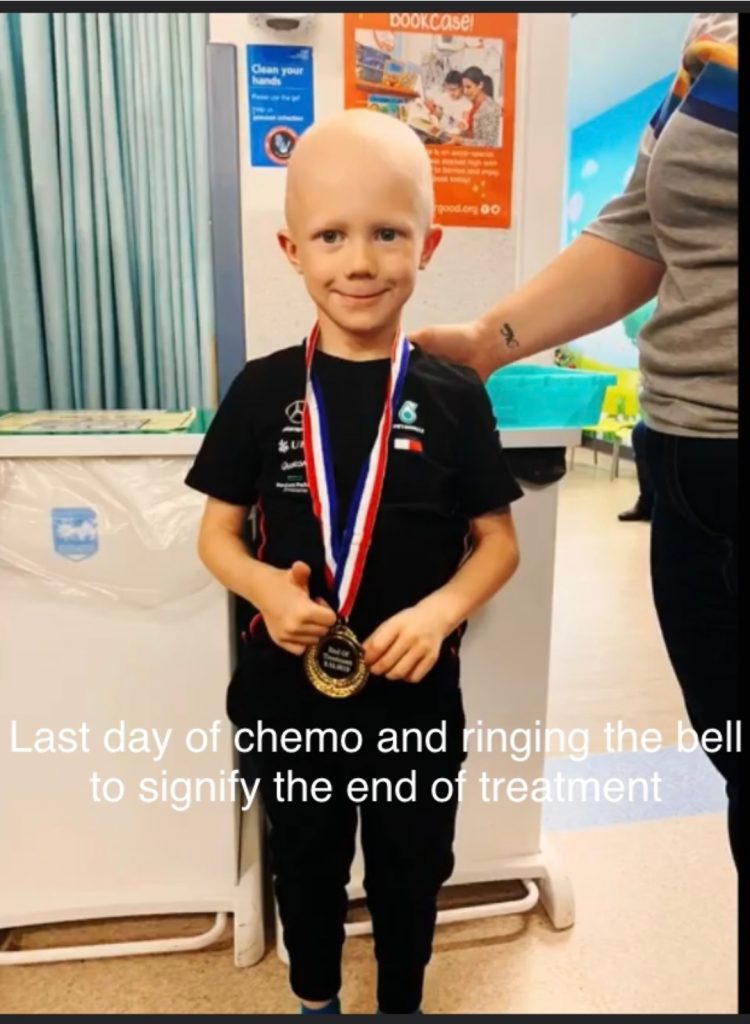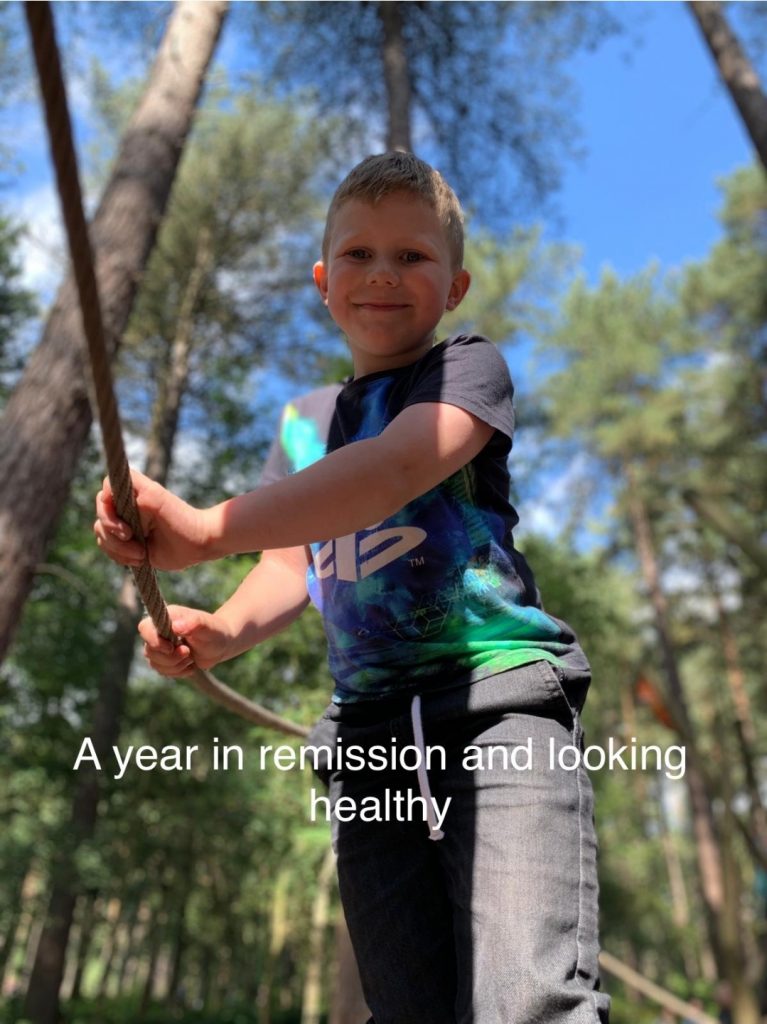Cervical cancer develops in a woman’s cervix (the entrance to the womb from the vagina). It mainly affects sexually active women aged between 30 and 45.
Symptoms of cervical cancer
Cancer of the cervix often has no symptoms in its early stages.
If you do have symptoms, the most common is abnormal vaginal bleeding, which can occur during or after sex, in between periods, or new bleeding after you have been through the menopause.
Abnormal bleeding does not mean you have cervical cancer, but you should see a GP as soon as possible to get it checked out.
If a GP thinks you might have cervical cancer, you should be referred to see a specialist within 2 weeks.
Screening for cervical cancer
The best way to protect yourself from cervical cancer is by attending cervical screening (previously known as a “smear test”) when invited.
The NHS Cervical Screening Programme invites all women from the age of 25 to 64 to attend cervical screening.
Women aged 25 to 49 are offered screening every 3 years, and those aged 50 to 64 are offered screening every 5 years.
During cervical screening, a small sample of cells is taken from the cervix and checked under a microscope for abnormalities.
In some areas, the screening sample is first checked for human papillomavirus (HPV), the virus that can cause abnormal cells.
An abnormal cervical screening test result does not mean you definitely have cancer.
Most abnormal results are due to signs of HPV, the presence of treatable precancerous cells, or both, rather than cancer itself.
You should be sent a letter confirming when it’s time for your screening appointment. Contact a GP if you think you may be overdue.
What causes cervical cancer?
Almost all cases of cervical cancer are caused by HPV. HPV is a very common virus that can be passed on through any type of sexual contact with a man or a woman.
There are more than 100 types of HPV, many of which are harmless. But some types can cause abnormal changes to the cells of the cervix, which can eventually lead to cervical cancer.
Two strains, HPV 16 and HPV 18, are known to be responsible for most cases of cervical cancer.
They do not have any symptoms, so women will not realise they have it.
But these infections are very common and most women who have them do not develop cervical cancer.
Using condoms during sex offers some protection against HPV, but it cannot always prevent infection because the virus is also spread through skin-to-skin contact of the wider genital area.
The HPV vaccine has been routinely offered to girls aged 12 and 13 since 2008.
Treating cervical cancer
If cervical cancer is diagnosed at an early stage, it’s usually possible to treat it using surgery.
In some cases, it’s possible to leave the womb in place, but it may need to be removed.
The surgical procedure used to remove the womb is called a hysterectomy.
Radiotherapy is another option for some women with early-stage cervical cancer.
In some cases, it’s used alongside surgery or chemotherapy, or both.
More advanced cases of cervical cancer are usually treated using a combination of chemotherapy and radiotherapy.
Some of the treatments can have significant and long-lasting side effects, including early menopause and infertility.
Complications
Some women with cervical cancer may develop complications.
These can arise as a direct result of the cancer or as a side effect of treatments like radiotherapy, chemotherapy and surgery.
Complications associated with cervical cancer can range from the relatively minor, like some bleeding from the vagina or having to pee frequently, to life threatening, such as severe bleeding or kidney failure.
The symptoms of cervical cancer are not always obvious, and it may not cause any at all until it’s reached an advanced stage.
This is why it’s very important to you attend all your cervical screening appointments.
Unusual bleeding
In most cases, abnormal vaginal bleeding is the first noticeable symptom of cervical cancer.
This includes bleeding:
- during or after sex
- between your periods
- after you have been through the menopause
Visit your GP for advice if you experience any type of abnormal vaginal bleeding.
Other symptoms
Other symptoms of cervical cancer may include pain and discomfort during sex, unusual or unpleasant vaginal discharge, and pain in your lower back or pelvis.
Advanced cervical cancer
If the cancer spreads out of your cervix and into surrounding tissue and organs, it can trigger a range of other symptoms, including:
- pain in your lower back or pelvis
- severe pain in your side or back caused by your kidneys
- constipation
- peeing or pooing more often than normal
- losing control of your bladder (urinary incontinence) or losing control of your bowels (bowel incontinence)
- blood in your pee
- swelling of one or both legs
- severe vaginal bleeding
When to seek medical advice
You should contact your GP if you experience:
- bleeding after sex (postcoital bleeding)
- bleeding outside of your normal periods
- new bleeding after the menopause
Vaginal bleeding is very common and can have a wide range of causes, so it does not necessarily mean you have cervical cancer. However, unusual vaginal bleeding needs to be investigated by your GP.
Almost all cases of cervical cancer are caused by the human papillomavirus (HPV).
Human papillomavirus (HPV)
Almost all cervical cancer cases occur in women who have been previously infected with HPV.
HPV is a group of viruses, rather than a single virus. There are more than 100 different types.
HPV is spread during sexual intercourse and other types of sexual activity, such as skin-to-skin contact of the genital areas or using sex toys, and is very common.
Most women will get some type of HPV infection at some point in their lives.
Some types of HPV do not cause any noticeable symptoms and the infection will pass without treatment.
Others can cause genital warts, although these types are not linked to an increased risk of cervical cancer.
But at least 15 types of HPV are considered high-risk for cervical cancer. The 2 highest risk are HPV 16 and HPV 18, which cause the majority of cervical cancers.
High-risk types of HPV are thought to stop the cells working normally, which can eventually cause them to reproduce uncontrollably, leading to the growth of a cancerous tumour.
As most types of HPV do not cause any symptoms, you or your partner could have the virus for months or years without knowing it.
See preventing cervical cancer for more information about reducing your chances of developing an HPV infection.
Pre-cancerous cervical abnormalities
Cancer of the cervix usually takes many years to develop. Before it does, the cells in the cervix often show changes.
These cervical abnormalities are known as cervical intraepithelial neoplasia (CIN) or, less commonly, cervical glandular intraepithelial neoplasia (CGIN) depending on which cells are affected.
CIN and CGIN are pre-cancerous conditions. Pre-cancerous conditions do not pose an immediate threat to a person’s health. But if they’re not checked and treated, they can potentially develop into cancer.
However, even if you develop CIN or CGIN, the chances of them turning into cervical cancer are very small.
And if the changes are discovered during cervical screening, treatment is highly successful.
The progression from HPV infection to developing CIN or CGIN and then cervical cancer is very slow, often taking 10 to 20 years.
Increased risk
HPV infection being very common but cervical cancer relatively uncommon suggests that only a very small proportion of women are vulnerable to the effects of an HPV infection.
There appear to be additional risk factors that affect a woman’s chance of developing cervical cancer.
These include:
- smoking – women who smoke are twice as likely to develop cervical cancer than those who do not smoke; this may be because of the harmful effects of chemicals found in tobacco on the cells of the cervix
- having a weakened immune system
- taking the oral contraceptive pill for more than 5 years – this risk is not well understood
- having more than 5 children, or having them at an early age (under 17 years old)
- your mother taking the hormonal drug diethylstilbestrol (DES) while pregnant with you – your GP can discuss these risks with you
The reason for the link between cervical cancer and childbirth is unclear.
One theory is that the hormonal changes that occur during pregnancy may make the cervix more vulnerable to the effects of HPV.
If cervical cancer is suspected, you will be referred to a specialist in treating conditions of the female reproductive system (a gynaecologist).
Colposcopy
If you’ve had an abnormal cervical screening test result, or any symptoms of cervical cancer, you will usually be referred for a colposcopy. This is an examination to look for abnormalities in your cervix. It’s norm6ally done by a nurse called a colposcopist.
If you have had abnormal bleeding, your GP may first recommend a chlamydia test before being referred for a colposcopy.
The colposcopist will use a device called a speculum to open your vagina, just like they do during cervical screening. A small microscope with a light at the end (a colposcope) will be used to look at your cervix. This microscope stays outside your body.
As well as examining your cervix, they may remove a small tissue sample (biopsy) so it can be checked for cancerous cells. After a biopsy, you may have some vaginal bleeding for up to 6 weeks. You may also have period-like pains.
In most cases, the abnormalities do not mean you have cervical cancer, but you may be referred to a gynaecologist for further tests.
Treatment to remove abnormal cells can sometimes be done at the same time as a colposcopy.
Further testing
If the results of the colposcopy or biopsy suggest you have cervical cancer and there’s a risk it may have spread, you’ll probably need to have some further tests to assess how widespread the cancer is. These tests may include:
- a pelvic examination done under general anaesthetic (while you’re asleep) – your womb, vagina, rectum and bladder will be checked for cancer
- blood tests – to help assess the state of your liver, kidneys and bone marrow
- a CT scan – used to help identify cancerous tumours and show whether cancerous cells have spread
- an MRI scan – also used to check whether the cancer has spread
- a chest X-ray – to check if the cancer has spread to the lungs
- a PET scan – often combined with a CT scan to see if the cancer has spread, or to check how well a person is responding to treatment
Staging
Staging is a measurement of how far the cancer has spread.
After all the tests have been completed and the results are known, it should be possible to tell what stage the cancer is. The higher the stage, the further the cancer has spread.
The staging for cervical cancer is:
- stage 0 – no cancerous cells in the cervix, but there are abnormal cells that could develop into cancer in the future – this is called pre-cancer or carcinoma in situ
- stage 1 – the cancer is only inside the cervix
- stage 2 – the cancer has spread outside the cervix into the surrounding tissue but hasn’t reached the tissues lining the pelvis (pelvic wall) or the lower part of the vagina
- stage 3 – the cancer has spread into the lower section of the vagina or pelvic wall
- stage 4 – the cancer has spread into the bowel, bladder or other organs, such as the lungs
Treatment for cervical cancer depends on how far the cancer has spread.
As cancer treatments are often complex, hospitals use multidisciplinary teams (MDTs) to treat cervical cancer and tailor the treatment programme to the individual.
MDTs are made up of a number of different specialists who work together to make decisions about the best way to proceed with your treatment.
Your cancer team will recommend what they think the best treatment options are, but the final decision will be yours. In most cases, the recommendations will be:
- for early cervical cancer – surgery to remove the cervix and some or all of the womb, or radiotherapy, or a combination of both
- for advanced cervical cancer – radiotherapy with or without chemotherapy, and surgery is also sometimes used
Cervical cancer is often curable if it’s diagnosed at an early stage.
When cervical cancer is not curable, it’s often possible to slow its progression, prolong lifespan and relieve any associated symptoms, such as pain and vaginal bleeding. This is known as palliative care.
The different treatment options are discussed in more detail in the following sections.
Removing very early cancer
Large loop excision of the transformation zone (LLETZ)
This is where the cancerous cells are removed using a fine wire and an electrical current.
It’s usually done under local anaesthetic (while you’re awake but the area is numbed) and can be done at the same time as a colposcopy.
Cone biopsy
A cone-shaped area of abnormal tissue is removed during surgery. This is usually done under general anaesthetic (while you’re asleep).
Surgery
There are 3 main types of surgery for cervical cancer:
- trachelectomy – the cervix, surrounding tissue and upper part of the vagina are removed, but the womb is left in place
- hysterectomy – the cervix and womb are removed and, depending on the stage of the cancer, it may be necessary to remove the ovaries and fallopian tubes
- pelvic exenteration – a major operation in which the cervix, vagina, womb, ovaries, fallopian tubes, bladder and rectum may all be removed
Pelvic exenteration is only offered when cervical cancer has come back.
Trachelectomy
A trachelectomy is usually only suitable if cervical cancer is diagnosed at a very early stage. It’s usually offered to women who want to have children in the future.
During the procedure, the cervix and upper section of the vagina are removed, leaving the womb in place. Your womb will then be reattached to the lower section of your vagina.
It’s usually done by keyhole surgery.
Lymph nodes (part of the lymphatic system, the body’s waste-removal system) from your pelvis may also be removed.
Compared with a hysterectomy or pelvic exenteration, the advantage of this type of surgery is that your womb remains in place. This means you may still be able to have children.
However, it’s important to be aware that the surgeons carrying out this operation cannot guarantee you will still be able to have children.
A stitch will be put in the bottom of your womb during the surgery. This is to help support and keep a baby in your womb in future pregnancies. If you do get pregnant after the operation, your baby will have to be delivered by caesarean section.
It’s also usually recommended you wait 6 to 12 months after surgery before trying for a baby so your womb and vagina have time to heal.
Trachelectomy is a highly skilled procedure. It’s only available at certain specialist centres in the UK, so it may not be offered in your area and you may need to travel to another city for treatment.

